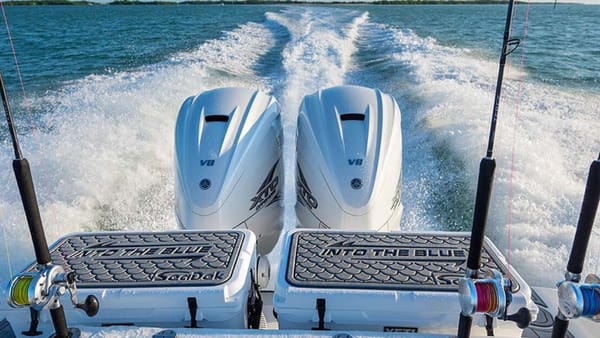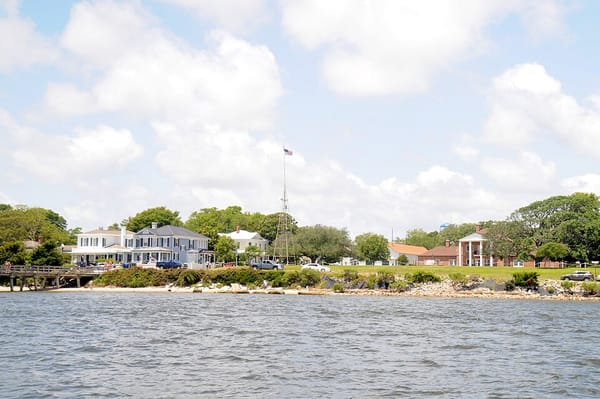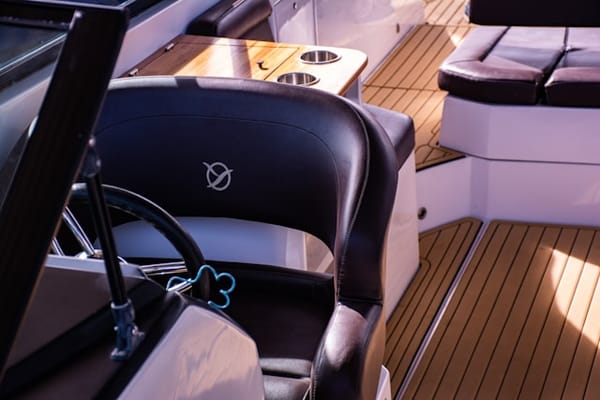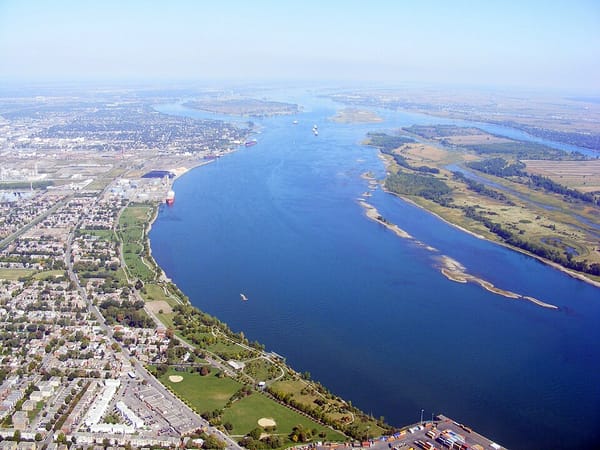Safety in Boating: Essential Gear and Equipment for a Safe Day on the Water
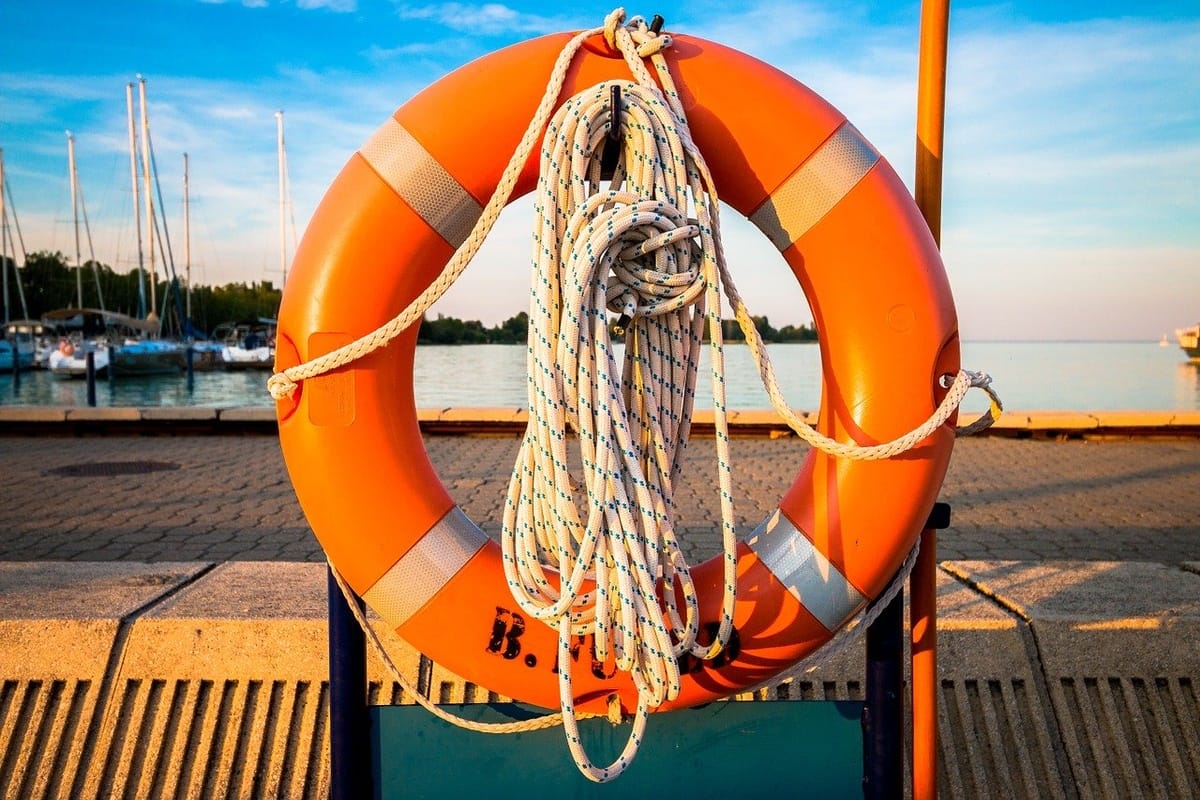
Freedom, relaxation and outdoor recreation with family and friends are just a few of the reasons we boaters enjoy the sport. From fishing, diving and snorkeling to swimming, sunning and sightseeing, life is just better from the bow of a boat.
I’ve said this before (and I’ll likely say it again), but with great fun comes great responsibility. Safety is the number one concern when out on a boat. Whether it’s life jackets, electronics or distress signal items, it’s necessary (and often a legal requirement) to have it on board.
Keep in mind that there are many pieces of safety gear and equipment that are required by the U.S. Coast Guard to have on board. There are also different requirements for different sized vessels. So, you’ll want to check that out before heading out from your boat lift rental. Today, we’re going to be going over the most important and obvious safety items you’ll definitely want on board.
Personal Flotation Device

Photo: Pixabay
It doesn’t matter if you’re pulling the kids in tubes, snorkeling in the Keys or docking and dining at your favorite restaurant, there must be one personal flotation device (PFD), or life jacket, for every person on board the boat. There are different types of life jackets for inland and offshore waters. Additionally, you’ll need a throwable flotation device.
Types of PFD
- Type I – Used offshore and for most water conditions, especially rough open water
- Type II – Near shore use where waters are calm
- Type III (flotation aid such as a fishing vest or a water sport vest) – Calm inland waters
- Type IV – Flotation that’s designed to be thrown (pictured below) and held onto, such as a cushion or ring
- Type V – Special use activities like a sailboard harness or a paddling vest
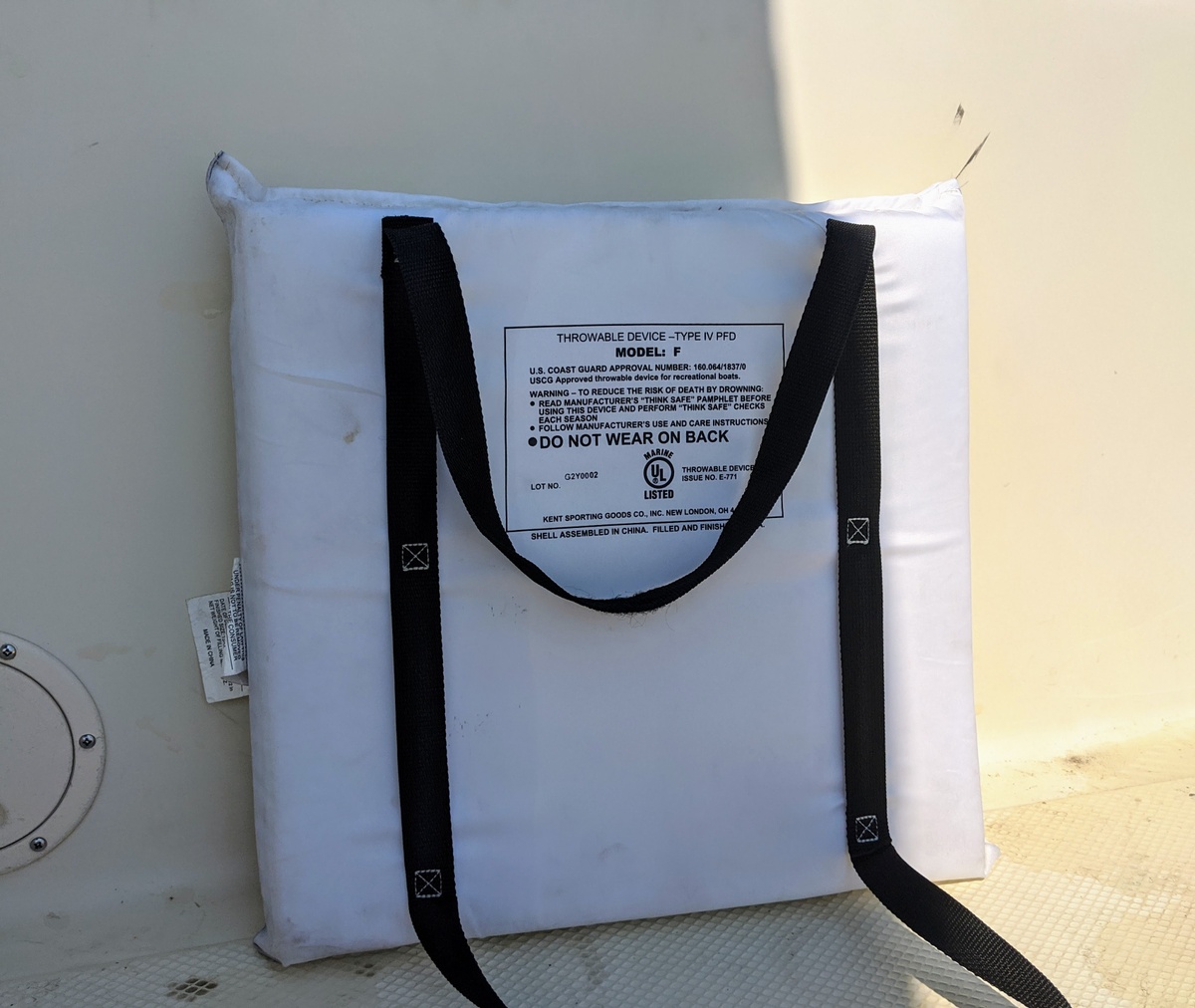
Distress Signals
Nine times out of ten, you’ll never need to make a distress call or signal. But that one time you do, you’ll be glad you have the proper tools and gear on hand.
Visual and Audio Distress Signals
If you only have one nautical flag, make it the SOS orange distress flag. This is used for day time signaling.
For night time use, you’ll need a flare gun and flares or an electric SOS signal light.
Have a horn, bell or whistle for sound indication of distress.
Navigation lights
Proper navigation lights are essential for night time boating. A search light / spotlight type of light is a great thing to have on hand. For example, in the Florida Keys there aren’t a lot of lights on the channel markers, so you’ll want to provide as much light of your own as you can to navigate back to your private boat dock rental.
Marine Electronics
You’ll need electronic devices for distress calling, ship-to-shore communications, NOAA weather updates and general navigation purposes (ship to drawbridge operator or marina harbormaster). A Smartphone is good to have, but you’ll also want marine-specific electronics.
VHF Radio
A Very High Frequency (VHF) radio is one of the most important pieces of safety equipment to have on your boat. With the press of a button, you can relay messages and transmit signals to the Coast Guard.
VHF radios come in handheld and fixed mount versions. It’s a good idea to have one of both in case one malfunctions, as well as when you want to use it somewhere else besides where it’s mounted.
EPIRB and PLB
An Emergency Position Indication Radio Beacon (EPIRB) emits a beacon that allows rescue crews to find you via GPS in an emergency. It’s registered to the vessel.
A Personal Locator Beacon (PLB) is smaller than an EPIRB. It’s registered to the person and can be attached to a life jacket.
Additional Safety and Navigational Items
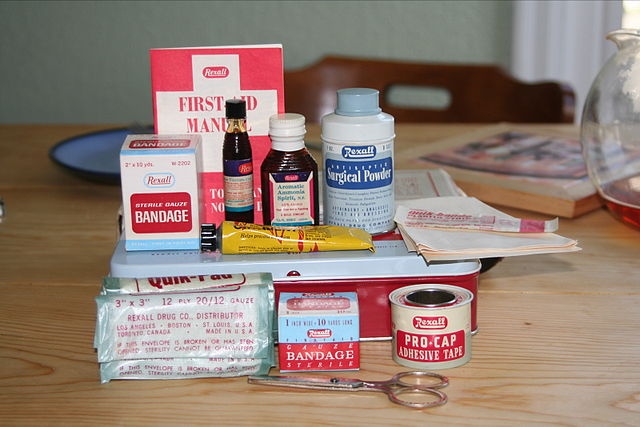
Photo: Wikimedia
- First aid kit with basic items such as bandages, antiseptic ointment, scissors, hydrocortisone, eye wash and distilled water
- Tool kit with extra things like spark plugs, filters and such
- Waterproof binoculars
- Compass
- Carbon Monoxide detector (for boats with cabins)
- Fire extinguisher – B-1 or B-II depending on the size and type of vessel
Finally, before heading out on an extended getaway or day trip from wherever you are renting a boat slip, always leave a float plan with somebody on land. This way, if you don’t show up at your designated location, the Coast Guard can be notified.
Hopefully this has helped you with any boating safety gear questions you might have. Happy Boating!
